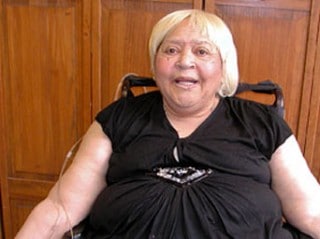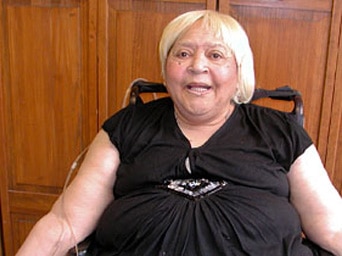
“I like to socialize, I’ve gone to the movies and I have my medical appointments.”
For Frances Pulley, a 73-year old U.S. Air Force Veteran from Syracuse, N.Y., socialization and even going downstairs in her home were difficult, if not impossible, before she started the Veteran-Directed Home and Community Based Care Services Program (VDHCBS).
VDHCBS started at Syracuse VA Medical Center in Syracuse, N.Y. more than a year ago to serve Veterans in Oneida County. The program is a collaboration between VA Medical Centers and area Offices for the Aging (OFA). It allows Veterans at risk for nursing home care to stay in the home and set up services based on their needs.
Through the program, Pulley was able to hire her grandson and daughter to help her out around the house, monitoring her diabetes and medical supplies, and helping with her nails and hair. She receives meal deliveries daily and attends an adult day health care twice a week.
Before a Veteran enrolls in the program, Anita Kennedy, RN, Program Manager, says she receives a referral from a VA clinic, the Office for Aging, the Veteran or family member.
“This is really about putting the Veteran in charge.”
— Dan Schoeps, Director of VA’s Purchased Long Term Care Group
“Then my office determines eligibility and calls to see if the Veteran is interested in the program. We also identify whether the Veteran is willing to make decisions about their care needs and if there is a care provider,” Kennedy explained.
The OFA staff will then do a detailed assessment of the Veteran and work on a service plan that meets the Veteran’s individual needs.
The service plan allows the Veteran to work with the Office for the Aging coordinator to develop a budget for the requested services. The coordinator makes quarterly visits to make sure that the service plan is effective. VA staff and the OFA coordinator collaborate to ensure the Veterans are satisfied with this new program.
Then Kennedy will review the service plan, make any necessary changes and approve it. Once approved, a Veteran will begin the process of connecting their caregiver with the Office for the Aging.
With help from VA’s partner, the Oneida County Office for the Aging, a chair glide is now installed in Frances Pulley’s home. During an initial visit, the OFA program coordinator discovered that without a chair glide between the first and second floors she was isolated in her bedroom.
“You don’t know what it is to sit on the chair and ride downstairs. I don’t have pain in my legs. I can get from my bedroom to the first floor, I can go outside, and to me that’s the best part of the program. It doesn’t separate me from the rest of my family,” says Pulley.
Independence in Care
To explore how the program can be implemented nationwide, VA began pilots at several VA mMedical Centers. The program currently operates in 14 states, 23 Medical Centers and has more than 500 Veterans enrolled. Plans are to expand to more VA Medical Centers this year.
“This is really about putting the Veteran in charge,” says Dan Schoeps, the National Director of VA’s Purchased Long Term Care Group. “The Veteran decides what the work day is going to look like in terms of when the worker comes, [they are] hiring the workers, whether its family members friends or someone from church. It’s someone they know and trust and it raises the comfort level.”
One of the goals of the program is to keep the Veteran connected to his or her family or community. By partnering with local Offices for the Aging, VA is able to offer a wider array of community services, especially to Veterans in rural areas.
“Essentially what this does is open up the availability of the local network of Aging programs to the VA, which is something new. I think it’s helped on some difficult cases for the VA,” says Michael Romano, director of the Oneida County Office for the Aging.
Staff at both the Syracuse VA Medical Center and the Oneida County Office for the Aging worked to standardize program procedures. To be eligible a Veteran must be honorably discharged, enrolled in VA health care and currently be receiving routine care from a VA primary care provider, and have the willingness and capability to participate.
Kenneth Piazza, Geriatric and Extended Care Manager at the Syracuse VA Medical Center, said that by the program offering a choice, the Veteran feels more invested in their own health care.
“This plan will be custom fit for an individual. What excites me so much is that VA is able to make available to Veterans this approach to health care services. We hope to add more Veterans and bring on more counties.”
With the Syracuse VA Medical Center’s program already expanding to two additional counties, more Veterans have the opportunity for continued independence and support.
ATTENTION READERS
We See The World From All Sides and Want YOU To Be Fully InformedIn fact, intentional disinformation is a disgraceful scourge in media today. So to assuage any possible errant incorrect information posted herein, we strongly encourage you to seek corroboration from other non-VT sources before forming an educated opinion.
About VT - Policies & Disclosures - Comment Policy




